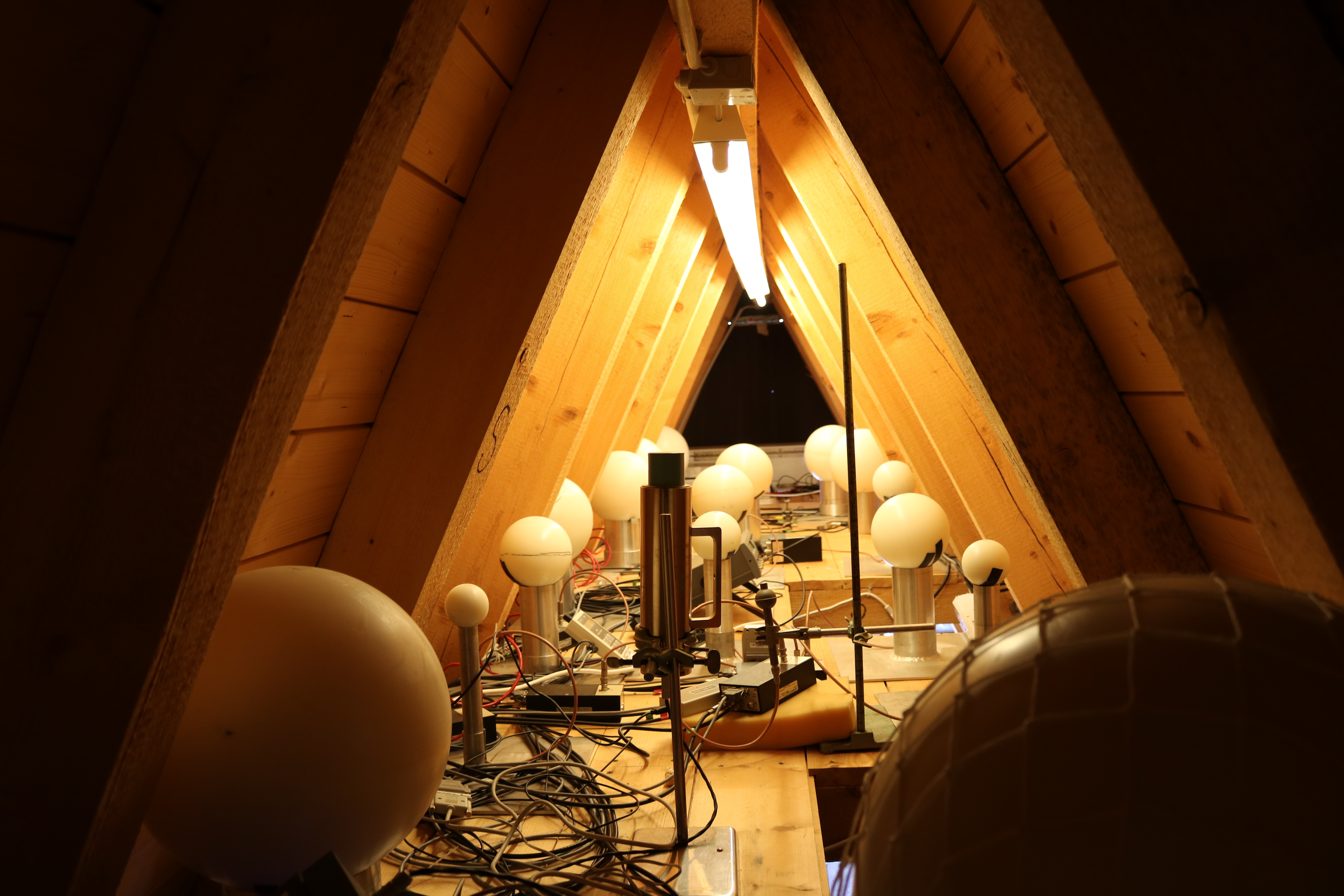

The Helmholtz Zentrum München operates a measuring station at the Schneefernerhaus with a reference radiation field for high-energy neutrons. Such neutrons arise in modern proton- and carbon -cancer -therapy as unwanted secondary particles, where they add to further radiation exposure for the patients. In the atmosphere, such secondary neutrons are produced by similar physical processes including the interaction of high-energy protons of the primary cosmic radiation with the molecules of the atmosphere.

With the neutron spectrometer installed at the Schneefernerhaus, short-term fluctuations of the neutron intensity as well as the energy of the neutrons may be determined. The goal of these measurements is to verify Monte Carlo Simulations of the cosmic radiation in the atmosphere and its interaction with the earth´s surface. Consequently, environmental parameters such as snow height, rainfall, air pressure etc., are also measured. With this, the neutron energy spectrum may be determined at any time by simulations as well as by spectrometry measurements. In this way, the neutron field at the Schneefernerhaus can be used for reference measurements of instruments that are also used at proton- and carbon therapy facilities. A mobile neutron spectrometer similar to the one on the Schneefernerhaus is used by HMGU for the detection of secondary neutrons at the proton and carbon therapy.
Additionally, an exact knowledge of the cosmic radiation at any given time and any given place in the atmosphere allows quantification of the radiation exposure of aircrew (pilots, cabin crew).
The research field of CMA is the investigation of health effects of aerosols with analytical and bioanalytical methods. Focus is on the development and application of mass spectrometric and chromatographic analysis techniques for the characterization of complex molecular mixtures in the environment and in biological systems.
Due to its location in the lower free troposphere, the UFS provides excellent conditions for the collection of background aerosols as a reference for anthropogenic air pollution.
In the framework of a collaboration with the University of Pretoria, South Africa (research group of Prof. Patricia Forbes), portable aerosol samplers and micro-aethalometers were installed at the UFS and on the Zugspitzplatt in 2018 in order to characterize semi-volatile organic compounds (SVOC) and black carbon (BC). The data was used to evaluate the exposure in high-alpine ambient air and to compare it with results from polluted environments.